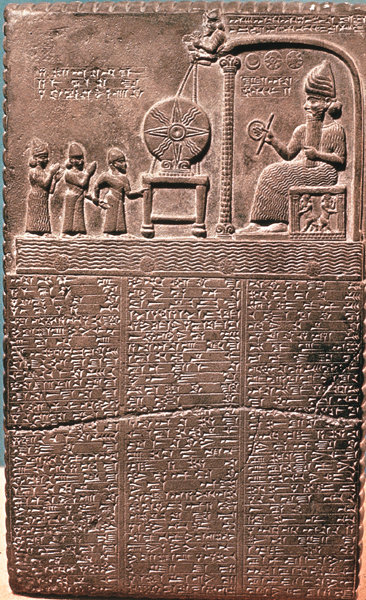Image Details

British Museum
The sun-god Shamash sits on his throne as the ninth-century B.C.E. Babylonian king Nabu-apla-iddina and two attendants approach. Between king and god is a sun-disk, symbol of Shamash. According to the cuneiform text inscribed below the images on this clay tablet from Sippar, Iraq, the cult statue of Shamash had been destroyed 200 years earlier; in the interim, the sun-disk was used to represent the god. But during the reign of Nabu-apla-iddina, a priest discovered a replica of the original cult statue on the banks of the Euphrates and brought it to the king. When the king beheld the statue, “his countenance was glad, and joyful was his spirit.” He produced a new cult statue of Shamash based on the original design and brought it back to life by performing the
